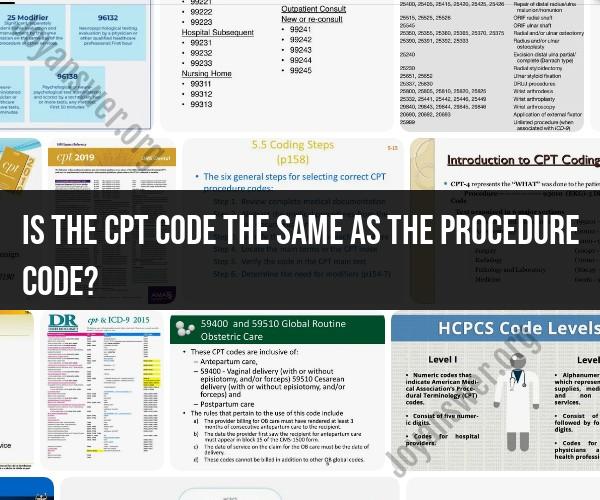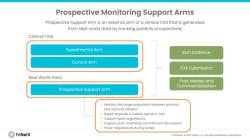Is the CPT code the same as the procedure code?
CPT codes (Current Procedural Terminology) and procedure codes are related, but they are not the same thing. They serve a similar purpose in the field of healthcare, but they have different code sets and are used for different types of medical coding and billing.
CPT Codes: CPT codes are a standardized set of codes developed and maintained by the American Medical Association (AMA). They are primarily used in the United States to describe medical procedures and services provided by healthcare professionals. CPT codes cover a wide range of medical services, including office visits, surgical procedures, diagnostic tests, and other healthcare-related activities. These codes are typically used for billing and insurance claims.
Procedure Codes: Procedure codes, on the other hand, are a broader category of codes used in the medical field. They can include CPT codes, but they also encompass other code sets used in different countries and healthcare systems. In some countries, different sets of procedure codes may be used instead of or in addition to CPT codes. These codes describe specific medical procedures, services, or treatments, just like CPT codes, but the specific code sets can vary depending on the healthcare system and country.
In summary, while CPT codes are a specific type of procedure code used in the United States, the term "procedure code" can refer to a wider array of codes used to describe medical services in other parts of the world or even within different specialties or healthcare systems. So, CPT codes are a subset of procedure codes, and the specific code set used may vary based on regional and professional preferences.
Is a CPT code the same as a procedure code, or are there differences?
CPT codes and procedure codes are often used interchangeably, but there is a subtle difference between the two. A CPT code is a specific code that is used to identify a medical procedure or service. A procedure code is a more general term that can refer to any code that is used to identify a medical procedure or service, including CPT codes.
In other words, all CPT codes are procedure codes, but not all procedure codes are CPT codes. Other types of procedure codes include HCPCS codes and ICD-10 procedure codes.
Understanding the purpose and usage of CPT codes in the medical field
CPT codes are used to describe medical procedures and services for a variety of purposes, including:
- Billing and insurance processing
- Medical documentation
- Clinical research
- Quality assurance
CPT codes are developed and maintained by the American Medical Association (AMA). The AMA updates the CPT codebook annually to reflect changes in medical practice and technology.
How to interpret and use CPT codes for medical billing and coding
CPT codes are used for medical billing and coding by physicians, hospitals, and other healthcare providers. When a patient receives a medical procedure or service, the healthcare provider will assign a CPT code to the procedure or service. The healthcare provider will then submit the CPT code to the patient's insurance company for reimbursement.
To interpret and use CPT codes for medical billing and coding, it is important to understand the following:
- The CPT code book: The CPT code book is a reference book that contains a list of all of the CPT codes and their descriptions. The CPT code book is updated annually by the AMA.
- CPT coding guidelines: The CPT coding guidelines are a set of rules that provide guidance on how to assign CPT codes to medical procedures and services. The CPT coding guidelines are also updated annually by the AMA.
Exploring the relationship between CPT codes and ICD-10 codes
ICD-10 codes are used to diagnose diseases and conditions. CPT codes are used to describe medical procedures and services. The two code sets are related in that they are both used to document the care that is provided to patients.
When a patient receives a medical procedure or service, the healthcare provider will assign both an ICD-10 code and a CPT code to the procedure or service. The ICD-10 code is used to diagnose the patient's condition, and the CPT code is used to describe the medical procedure or service that was performed.
Common misconceptions and pitfalls when dealing with CPT codes
Here are some common misconceptions and pitfalls when dealing with CPT codes:
- Misconception: All CPT codes are created equal.
- Fact: CPT codes vary in complexity and value. Some CPT codes are more complex and require more time and resources to perform than others.
- Pitfall: Using the wrong CPT code.
- It is important to use the correct CPT code for the medical procedure or service that was performed. Using the wrong CPT code can lead to denied claims and other problems.
- Misconception: CPT codes are only used for billing and insurance processing.
- Fact: CPT codes are also used for medical documentation, clinical research, and quality assurance.
- Pitfall: Not understanding the CPT coding guidelines.
- It is important to understand the CPT coding guidelines to ensure that you are assigning CPT codes correctly.













